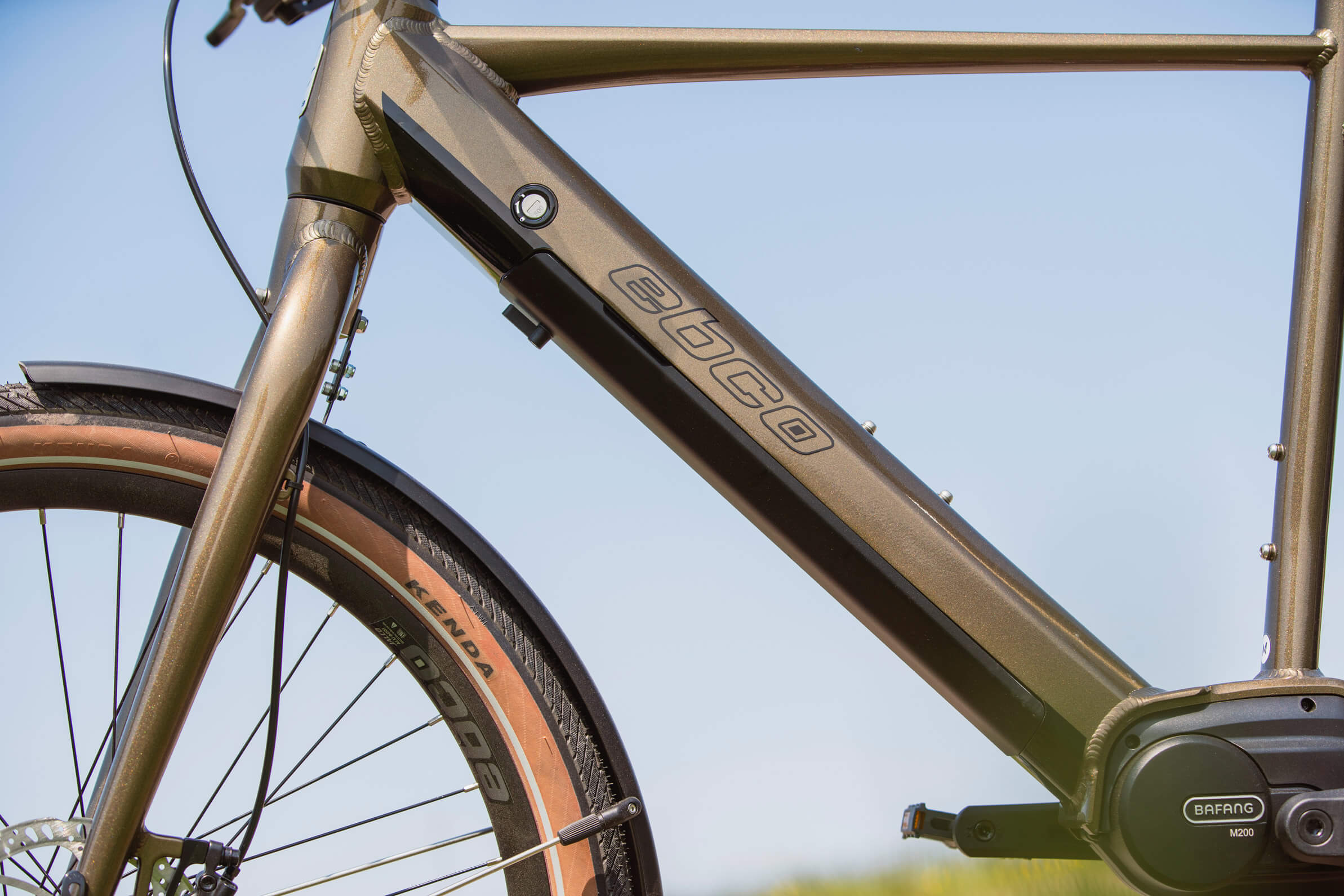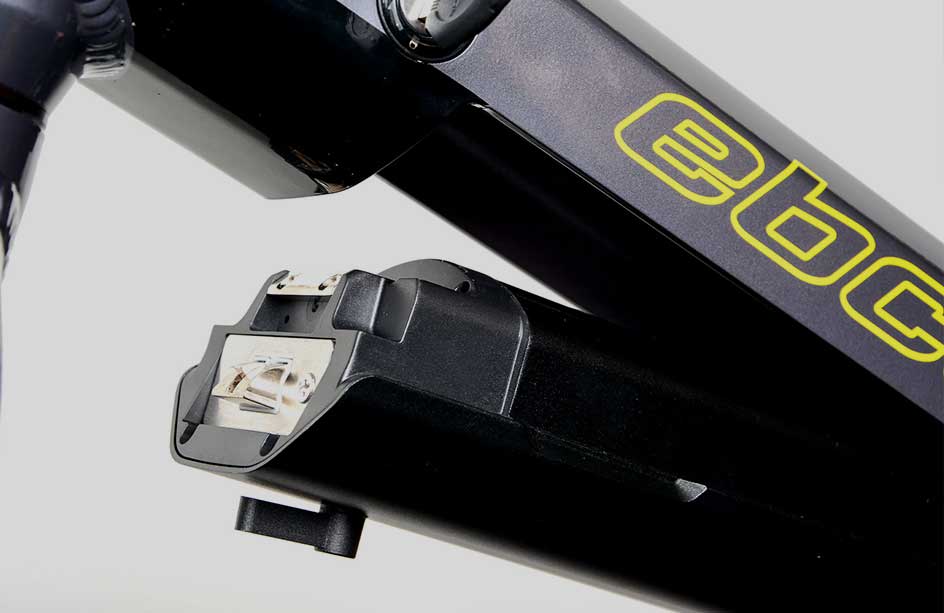How to buy and set up your perfect electric mountain bike

Modern technologies that will enhance your electric mountain bike experience
A dropper post
Not to be confused with a suspension seat post, the dropper post is a relatively new, but groundbreaking addition to the mountain biking world. In simple terms, the dropper post is an ultra-fast way to drop or raise your seat post. It is far faster to adjust than the bolted seat clamp of old, faster still than the newer quick-release clamp and now slicker than the under saddle lever that started off the dropper movement. Most systems now are hydraulic in operation and incredibly slick compared to earlier designs.
Modern dropper posts may not even be noticeable at first, as many are now internally cable routed through the bike’s frame to a remote or trigger on the handlebar that, when activated, will enable you to use your weight to push the post down into the frame in a mere moment. The reverse occurs when it is time to raise the post, albeit with some control of the motion gently raising the post back toward the extended position.
Why would you need this technology and why would it improve your riding? That’s simple; you will be able to climb with greater efficiency with the seat post at full extension and pressed against your posterior. The reverse is the case when dropped, meaning you’ll have greater control on descents with the seat lowered, giving you more agility to get your bum over the rear wheel and ready to point sharply down the trail with no fear.
Most mountain bikers, if they had to choose a game-changing technology, now cite the dropper post as a significant development that improved their overall ride experience.
Tubeless tyres
Gone are the days when the inner tube reigned supreme. There are nowadays challenging technologies, including vastly more robust tubes from brands like Tubolito that are also worth a look if you’re not ready to make a tubeless conversion, but you’ll find that many modern mountain bikers prefer to go tubeless for good reason.
The key reasoning behind going tubeless centres on the ride control you’ll gain, as well as the reduced number of flat tyre issues you’ll encounter. Where tyres can be run at lower pressures you’ll find your traction is increased and that the tyre is more moldable to the trail’s features. As there is no tube to pinch the snakebite pinch flat is now a thing of the past and thanks to tyre inserts you can protect your rims too.
As and when the tyre does encounter a thorn of a shard of glass, the tubeless sealant will immediately be sucked toward the gap in the rubber, clogging and clotting the hole, thus sealing it. Often this happens without you even noticing that a puncture has occurred.
All in all, this is generally a cheaper solution and with less waste product than running and replacing tubes frequently.
As for downsides, there is generally a greater level of skill involved to install a tubeless system, so be sure to have your local bike shop handle the setup. Without a compressor to quickly inflate and seal the system, you may make a mess at home. Components of a tubeless setup include a compatible tyre, sealant, rim tapes and a pair of tubeless valves.
It of course doesn’t hurt to carry an emergency tube, just in case of any major incidents where the tyre may not reseal.
1X Drivetrains
You may notice that many modern mountain bikes no longer carry a front derailleur and this is quite simply down to manufacturers achieving enough range on the cassettes, with 12-speed systems now not uncommon, 13-speed systems are even emerging with some manufacturers.
What the removal of the front derailleur has enabled most of all is the evolution of bike geometry. No longer do frame designers need to account for the placement of the front derailleur and so they have been able to get a little more creative with angles and chainstay lengths in order to create more capable feeling bikes. As an example, a shorter travel bike can now feel a lot more capable than the spec sheet suggests, thanks in part to this development.
Most riders will not notice any major loss of range in the new 1X systems, which have a broad ratio, just with fewer steps in between gears. The change is not as noticeable as you may think and with the addition of a motor the difference is negligible; you’ll be able to comfortably tackle even the steepest mountain passes.
Suspension front and rear
Certainly not a new innovation, but one that gets progressively more capable, to the point where some suspension systems, such as RockShox Flight Attendant, use automatic sensors to read the trail and adjust to offer the perfectly matched suspension settings on the fly. These clever bits of tech won’t feature on all mountain bikes, of course, but the modern suspension is lightyears ahead of its mid-80s roots.
There’s not too much that’s essential knowledge, but it’s good to be aware of some basics when it comes to suspension. One phrase you’ll hear often is ‘travel’, that being the term for how much length is in the stanchions (fork legs), or in other words, how much absorption you have to play with before you’ve exhausted the forgiveness offered.
Longer travel systems – say 180mm to 200mm of travel – are reserved for aggressive downhill and slopestyle pursuits, so for most of us that’ll be overkill. For the typical trail in the south of England, a 130mm travel would be a sweet spot between cross-country comfort and slightly livelier trail use, while a 150mm to 160mm travel might be better for exploring the rough and ready parts of the Lake District, for example. Anything with around 100mm to 120mm of travel will be fine for cross-country usage, but any lower than that and you’re probably looking at a bike better suited for the towpath or city use.
Travel will generally be well matched on the front and rear on most off-the-shelf bikes, though technologies vary and offer differing ride feels and performance. All you need to worry about is matching your weight to the setup, something that your local bike shop can advise on and set up in-store.
Wheel size
If you’ve been away from the mountain bike scene for a while, or are brand new to it, things have changed in the past five to ten years on the wheel size front.
Where 26-inch wheels used to be the norm, now the mountain bike world tends instead to offer either 27.5-inch or 29-inch wheels and sometimes a combination of the two. 27.5-inch is occasionally also referred to as 650b. If you end up with a bike with two differing-sized wheels, be aware you will need to consider two differing tube and tyre sizes for future maintenance.
What does this mean for you? The consensus is that both 27.5-inch and 29-inch wheels handle better than the 26-inch wheels of old. Certainly, a larger rolling diameter will more casually roll over cracks or root systems in the trail, resulting in a smoother ride and more control. Where the wheels are bigger it is more important than ever, especially if you are a smaller rider, to get the right frame size to make sure you’re comfortable on the bike, so be sure to go to your local bike shop to get sized up.




